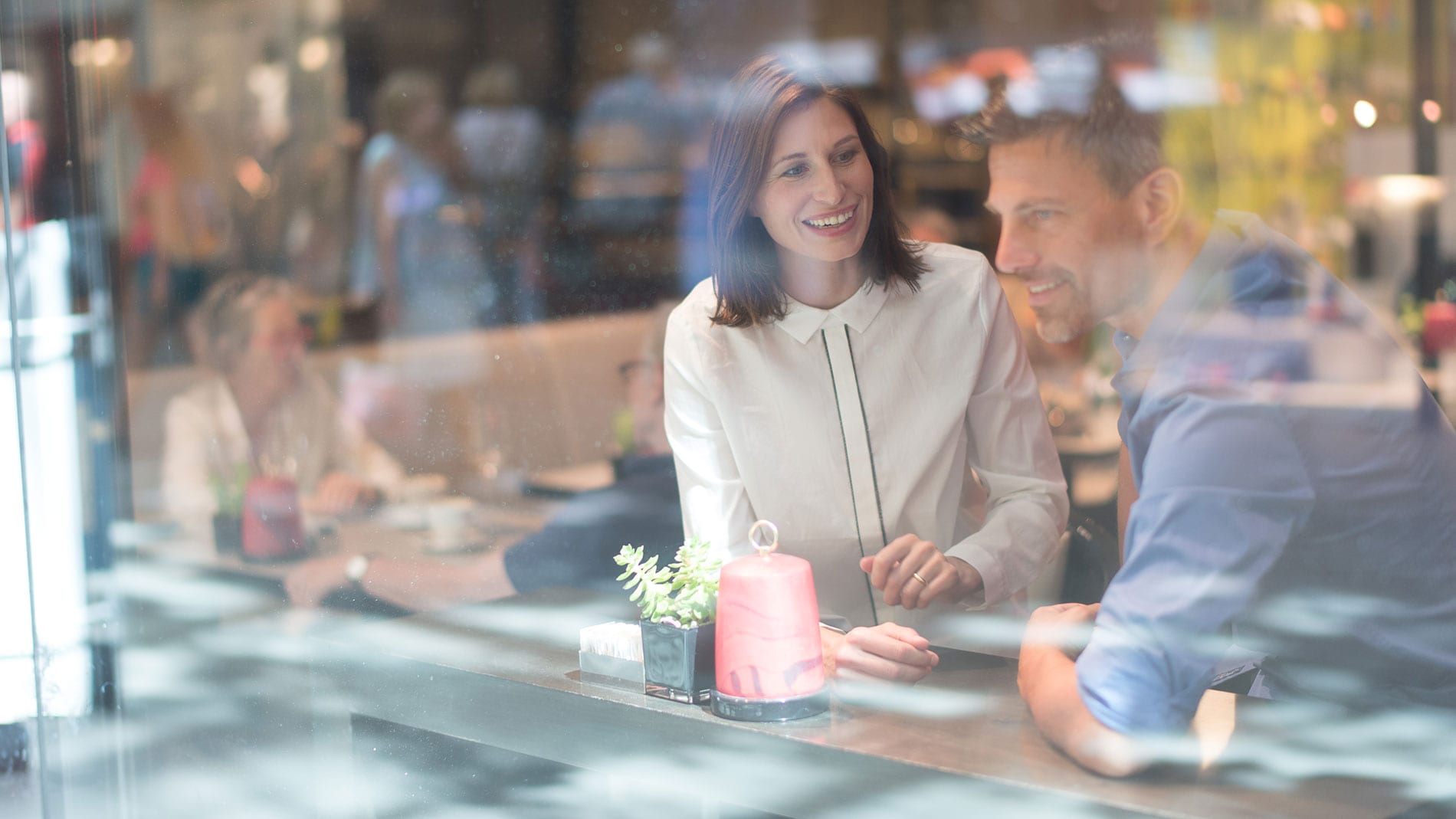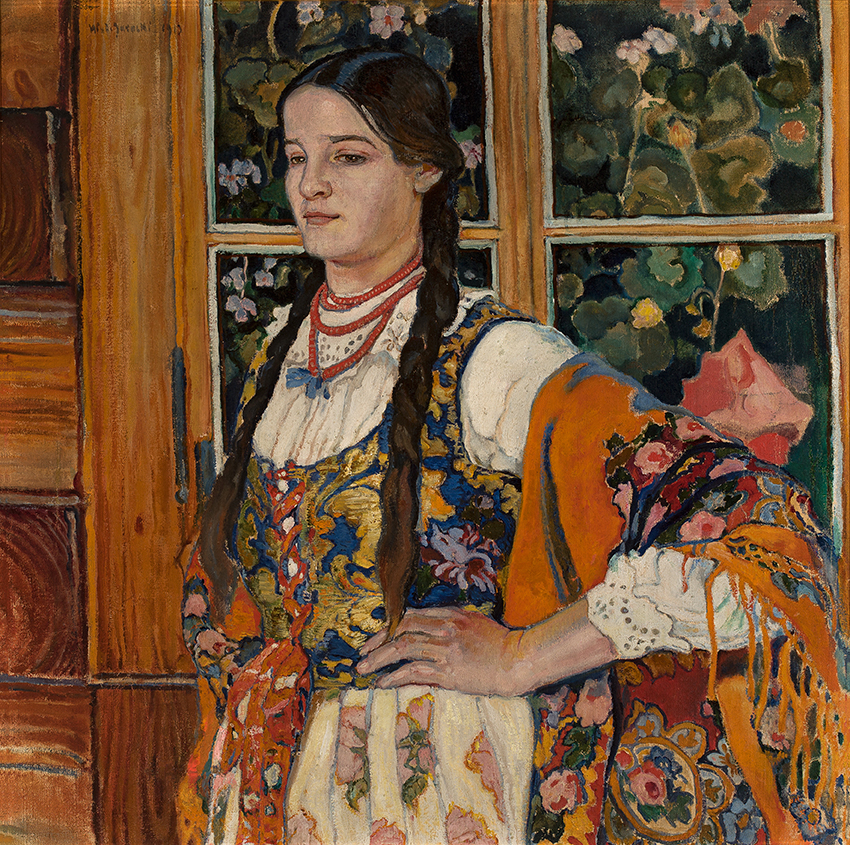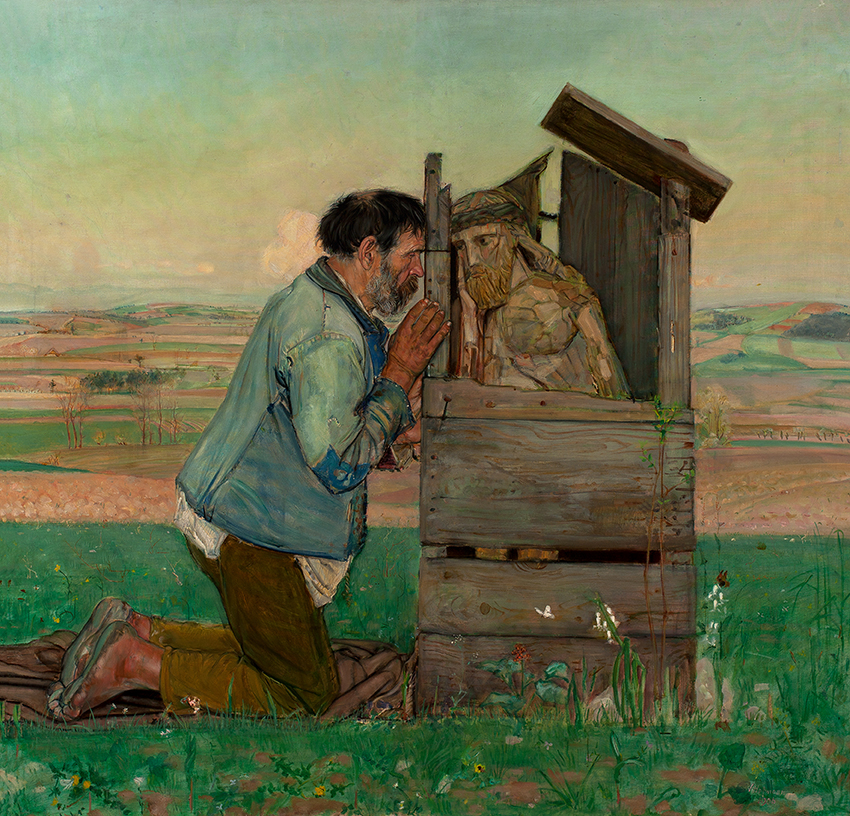
News
News 03/25/2022
25 March – 7 August 2022 “SILENT REBELS” at the Kunsthalle München
On Friday, 25 March, the new exhibition of the Kunsthalle München opens at our FÜNF HÖFE. The title: “Silent Rebels. Polish Symbolism around 1900”. It is the most comprehensive exhibition to date in Germany on the heyday of Polish art between 1890 and 1918. Around 130 important works from the national museums in Warsaw, Krakow and Poznan as well as other public and private collections will be on display.
“Silent Rebels. Polish Symbolism around 1900”.
Polish painting at the turn of the century transports us into a world of myths and legends, into dreamy landscapes, into old traditions and customs, into the depths of the human soul. In a nation without its own state – Poland was divided between Russia, Prussia and Austria-Hungary until its independence in 1918 – a young generation of artists set out to renew painting. With their paintings, they created what was lacking at the political level: a common identity. They found inspiration in their own Polish history, culture and nature as well as in the exchange with artistic circles in Munich, Paris, St. Petersburg or Vienna.
A golden age of Polish culture
The turn of the 19th and 20th centuries was a heyday of Polish culture. The “Young Poland” movement (1890-1918), which encompassed literature, visual arts and music, initially emanated mainly from Cracow. Under the more liberal policies of Austria-Hungary, the former capital of Poland offered better conditions for the development of Polish cultural life than the Prussian and Russian-occupied areas, which were subject to stronger restrictions. Nevertheless, despite all the restrictions, Warsaw was the most important artistic centre next to Krakow.
Romanticism & Rebellion
The term “Young Poland” was coined by the writer and literary critic Artur Górski (1870-1959), who in his series of essays of the same name (1898) noted a change in values in contemporary literature and art: “The mass was replaced by the individual as the supreme value and expression of the highest dignity on earth, and social ethics were replaced by the ethics of the soul […].” The new generation turned away from the rationalist philosophy of positivism and instead turned to the tradition of romanticism. Among other things, the rebellious spirit, the stylisation of the artist as a visionary creator and the interest in illustrating emotional states linked them to this tradition. The reformulation of the task of literature and art was marked by a contradiction: The Romantic national cult and the necessity of a popular, “thoroughly Polish” art were invoked, but a patriotic obligation to society was rejected.
A wealth of facets in ten chapters
In ten thematic chapters, the exhibition presents the impressive wealth of facets of Polish art of this period, which has been unjustly little known in Germany until now. The show traces its development and situates it in the cultural, social and political context of Poland and Europe.
The exhibition was initiated by the Kunsthalle München and co-organised by the Adam Mickiewicz Institute and the national museums in Warsaw, Krakow and Poznan.
The exhibition is open daily from 10 am to 8 pm.
Further information: www.kunsthalle-muc.de
COVID-19 informations
At present, admission to the Kunsthalle München requires 3G proof: vaccinated, recovered or tested (rapid antigen test: not older than 24h; PCR test: not older than 48h; no self-test). Test stations can be found here. The nearest rapid test centres are located in the Munich Residenz or at Maximiliansplatz. Please wear an FFP2 mask throughout your visit.
Public guided tours of the MVHS (max. 15 pers.): Mon 11:30, Thu 18:30, Fri 15:30 and Sat 13:00, 8 € + admission, participation possible after prior registration at the MVHS: T +49 (0)89 / 480 06 62 39 or www.mvhs.de
Guided tours for children (6-12 years) during the holidays: 13.4., 20.4., 8.6., 15.6., 3.8. each at 3 p.m., 6 €, registration: T +49 (0)89 / 22 44 12
Art & Culinary delights
Why not take a seat before or after the exhibition for refreshments, coffee and cake or a lunch dish at Theatiner 8, the café & restaurant in the foyer of the Kunsthalle on the 1st floor.
Images:
Władysław Jarocki
Helenka from Poronin
1913
Oil on canvas, 98 x 100 cm
National Museum in Warsaw
Vlastimil Hofman
Confession
1906
Oil on canvas, 140 x 145,5 cm
National Museum in Warsaw



